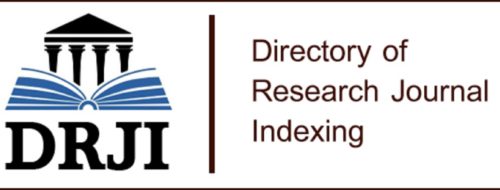Corn cultivation and its water needs in manabí, ecuador
Keywords:
water, crop, corn, moistureAbstract
The lack of water is the most limiting factor in corn production, when there is water stress during the early stages of cultivation it can cause loss of young plants, also in the flowering stages corn is very sensitive to water stress, so which grain yield is seriously affected (Deras, 2012). The water needs of crops are related to various factors, among them is the climate, and water waste, in addition to the state of the development phases of the crop; since all these components make it easier to conserve moisture in the root system of plants. It is important to know the crop coefficient (Kc) which is an important parameter for management, programming, since water extraction varies from one period to another. Knowledge of the adequate water requirement for crops is essential to improve the efficiency of irrigation systems, providing the plantation with the amount of water necessary to meet its needs; since, an excess of irrigation can cause, among other things, the washing of fertilizers, while a supply of water less than the needs of the crop can cause a water deficit; and with it, a decrease in production. It must be periodically replenished to the soil so as not to damage the productive potential of the plant, the crop coefficient (kc) being a value used to calculate the amount of water that must be applied through the different irrigation systems.
Keywords: water, crop, corn, moisture.
Downloads
References
Allen, R., Pereira, L., Raes, D., & Smith, M. (2006). Evapotranspiración del cultivo: Guías para la determinación de los requerimientos de agua de los cultivos. Food and Agriculture Organization. Rome. Estudio Fao Riego y Drenaje N° 56.
Almorox, J. (2010). Efecto de la radiacion sobre las plantas. Madrid.
Beltrán-Morales, F. A., Fenech-larios, L., Palo, P., Rita, D. S., Paz, L., & Sur, B. C. (2011). Tropical and Subtropical Agroecosystems, 13: 181- 186, 13, 181-186.
Demtr, W., & Heidelberg, S. (2014). Chapter 2 1., (1981), 1984-1986. https://doi.org/10.1007/978-3-642-53859-9
Deras, H. (2012). Guía técnica El cultivo del maíz. Recuperado de http://repiica.iica.int/docs/b3469e/b3469e.pdf
Espinoza, H. (1989). Balance hídrico y necesidades de agua para los cultivos más importantes en la cuenca del río La Cienega Vallegrande, Santa Cruz, Bolivia, 24. Recuperado de http://www.fao.org/docrep/field/009/ar841s/ar841s.pdf
FAO (Organización de las Naciones Unidas para la Alimentación y la Agricultura). (s. f.). Diseño de métodos de riego, 39-53. Recuperado de http://www.fao.org/tempref/GI/Reserved/FTP_FaoRlc/old/prior/recnat/pdf/MR_cap3.PDF
IDEAM. (2014). Marco Conceptual Viento. Recuperado de http://bart.ideam.gov.co/wrfideam/ATLAS/documentos/Marco Conceptual_ Viento.pdf
Lallana, V. y Lallana. M. (2003). ESTOMAS Y TRANSPIRACION Introducción : Facultad de Ciencias Agropecuarias - UNER, 32-35.
Romero, E; Rodríguez, A; Rázuri, L; Suniaga, J y Montilla, E. (2009). Estimación de las necesidades hídricas del cultivo de pepino ( Cucumis sativus L.) durante las diferentes etapas fenológicas, mediante la tina de evaporación .Agricultura Andina / volumen 16, pp. 56 - 69
Sánchez, M. (2001). Métodos de estimación de evapotranspiración utilizados en Chile. Revista de Geografía Norte Grande, (28), 3-10.
Sánchez, M., & Carvacho, L. (2006). Estimación de evapotranspiración potencial, ETP, a partir de imágenes NOAAAVHRR en la VI Región del Libertador General Bernardo O’Higgins. Revista de geografía Norte Grande, (36), 49-60. https://doi.org/10.4067/S0718-34022006000200003
Sotelo, A. (2014). Cátedra de Fisiología Vegetal Facultad de Ciencias Exactas y Naturales - Fotosintesis. Unne, 1-20.
Universidad Nacional del Centro de la Provincia de Buenos Aires. (2014). Unidad 3: Evaporación y Evapotranspiración. Unicen, 19. Recuperado de https://goo.gl/IECiqD
USFQ (Universidad San Francisco de Quito). (2017). En Memorias de la XXII reunión latinoamericana del Maíz. Quevedo-Ecuador.
Villafáfila, E., & Wyss, F. (2009). Riego en horticultura Guia para la instalación de pequeños sistemas de riego. INTA-Agencia Extensión Rural, 50.
Yánez, G., Zambrano, J., Caicedo, M., & Heredia, J. (2013). El cultivo de maíz de altura, Pub. L. No. 96, 96 1. Recuperado de http://repositorio.iniap.gob.ec/handle/41000/2435
Yepes, A. y Silveira, M. 2011. Plant responses to meteorological events related to climate change - review. Colombia Forestal, 14(0120-0739), 213-232. Recuperado de http://www.redalyc.org/articulo.oa?id=423939616005
Published
How to Cite
Issue
Section
License
Copyright (c) 2022 Revista de Ciencias Agropecuarias ALLPA. ISSN: 2600-5883.

This work is licensed under a Creative Commons Attribution-NonCommercial-ShareAlike 4.0 International License.


.jpg)










